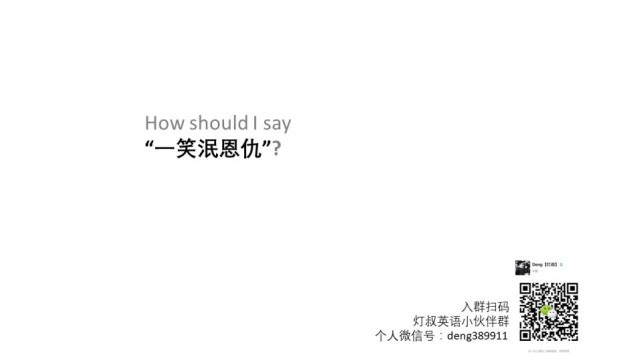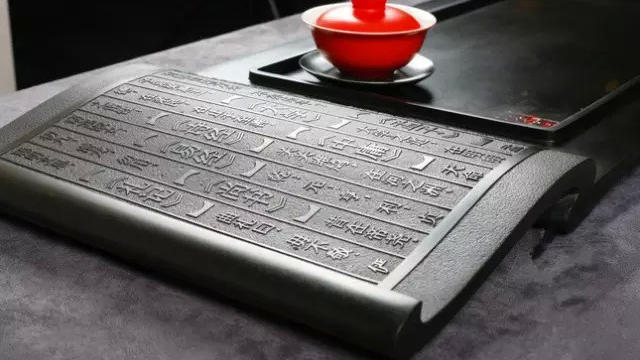张培基英译散文赏析之《巷》(上)
巷The Lane
柯灵 Ke ling
| 译文摘自张培基《英译中国散文选一》
要点:
1,“飘逸恬静”译为gentle gracefulness,把原文两个并列形容词转变为英语“定语+抽象名词”的形式,内容不变。这是文学翻译时常用方法。
2,“古雅冲淡的图画“意即”优雅简单的古画“译为a painting of classic elegance and simplicity
综述:前方高能!!本文通篇充斥着四字词,
要点:
1,“常在河南的小城市中”译为often tucked away in a small town south of the yangtse river,其中动词短语to tuck away作“使隐藏”、“把……置放在隐蔽的地方”解,是添加成 分,原文虽无其词而有其意。
2,“有如古代的少女,躲在僻静的深闺,轻易不肯抛头露面。”译为the lane, like a maiden of ancient times hidden away in a secluded boudoir, is reluctant to make its appearance in public.这个分句又粗线了两个动词,“躲在…“是次要动词,译文将其处理为后置定语,将”不肯…”译为主要动词~
3,“它不是乡村的陋巷”意即“它和乡村的陋巷不同”,因此全句译为the lane has nothing in common with the mean rural alleys,其中成语in common的意思是“共同”。大家可以看到文学翻译中对于一些常见词的翻译都很灵活,比如这个“不是”,在不同语境中的处理是不一样的
如:“哲学不是知识”可以译为=philosophy does not pretend to be knowledge.
“哲学不是几何学“=philosophy dissimilar to geometry.
“哲学不是科学技术“=philosophy does not work the way that science and technology do
4, “湫隘破败”意即”低洼矮小,衰落破败“译为narrow and low-lying,未交代“破败”,因它的意思已包含在句中“陋”、“坎坷”等形容词中。但如照译不误,也无不可:narrow, low-lying and in bad condition (out of repair)。
5,“泥泞坎坷“还好说~有现成的词可以用,”杂草乱生“可译为outgrown with weeds,而”两旁还排列着错落的粪缸“时,注意转为被动,译为lined here and there with manure vats .
综述:定语太多怎么办?甩给which君!!学习用which串句子的技巧~
要点:1,“它不是上海的里弄”译为Nor has it anything in common with linong (meaning alleys) in Shanghai.同志们~nor开头有木有似曾相识的赶脚~对!整个一段就是一个大写的“否定词+nor 结构”啊~我含辛茹苦地说了那么多期
2,“鳞次栉比的人家,拥挤得喘不过气”译为which are literally packed with dwellings and their residents.,因为“鳞次栉比”本身就是“形容房屋密集”的意思,所以用一be pack with(表挤满,塞满)处理足以~避免意思重复
3,译文中的over there,属于增译,承载着新信息到旧信息的过渡,使得新主语“小贩”的出现显得不那么突兀。下文from time to time也是为了新主语“女子”的出现起到缓冲的作用,使语篇连贯更为自然~
4,,“不时走出一些趿着拖鞋的女子”这里的“走”译为shuffle(拖着脚走),又体现了文学翻译中对于小词的运用~以下是常见的各种“走”:
Stagger(蹒跚), plod(重步走), pace(踱步), loiter(闲逛), stride(大步走), strut(昂首阔步), ramble(漫步), lurk(潜伏), creep(爬行), stroll(闲逛), trudge(艰难地走), lurch(摇摆不定地走), limp(跛行), crawl(爬), rush (快步走)
好好记住这些词,下文还会用上哒~这些小词对翻译写作和阅读都有帮助~
4, “头发乱似临风飞舞的秋蓬”中的“蓬”是一种草,即“蓬蒿”,秋时干枯,临风飞舞,现将此句译为“disheveled like wind-blown withered grass in autumn.而“颓然”意即“没精打采”或“慢吞吞”译为languidly sluggishly.
5,本段中的“里弄“”胡同“都是中国才有的东西,一般采用音译法,在之后加注或者在文中直接给予解释,这点在《中年人的寂寞》等文中也有体现~
综述:本段还要注意,张爷爷在翻译女子一系列状态时,用了一连串的独立主格结构,给人动作神态一气呵成的感觉~~
要点:
1,“市廛”即“市区”,“红尘”即“繁华的社会”因此译为the hustle and bustle of busy cities,增加了译文的音韵之美~
2,“它又这么曲折,你望前面,好像已经堵塞了,可是走过去,一转弯,依然是巷陌深深,而且更加幽静。”第 一 句 主 是 是 “ 它 ( 巷 ) ”, 第 二 句主语是 “ 一个人 ”,虽然并未写出来,但是意义不言自明。译文采用 “ y o u ” 来转换主语,。译为It is also so winding that it seems to be a blind alley when you look far ahead(把“人“和”巷“联系), but if you(转换主语咯~) keep walking until you take a turning, you’ll find it again lying endless and still more quiet.
3,动词lying 使巷子具有动态的美感,lying endless ,两个词放在一起,仿佛让人看到,一条无限延伸的巷子
4,“好像已经堵塞了“意即”好像是死胡同“故译为it seems to be a blind alley
5, “那里常是寂寂的,寂寂的”语气强调,译为There is nothing but stillness there(nothing but此处表强调哦)
6,本段仍旧有一些不太好理解的词语,例如“巷陌深深“形容巷子长”,踅去“意为”走去“,这些都是要考平时积累的,平时多读名家名作对于翻译这类文章有巨大帮助~
综述:注意第二点第二点第二点所提到的视角推进~
声明:本双语文章的中文评析系沪江英语原创内容,转载请注明出处。中文评析仅代表作者个人观点,仅供参考。如有不妥之处,欢迎指正。











